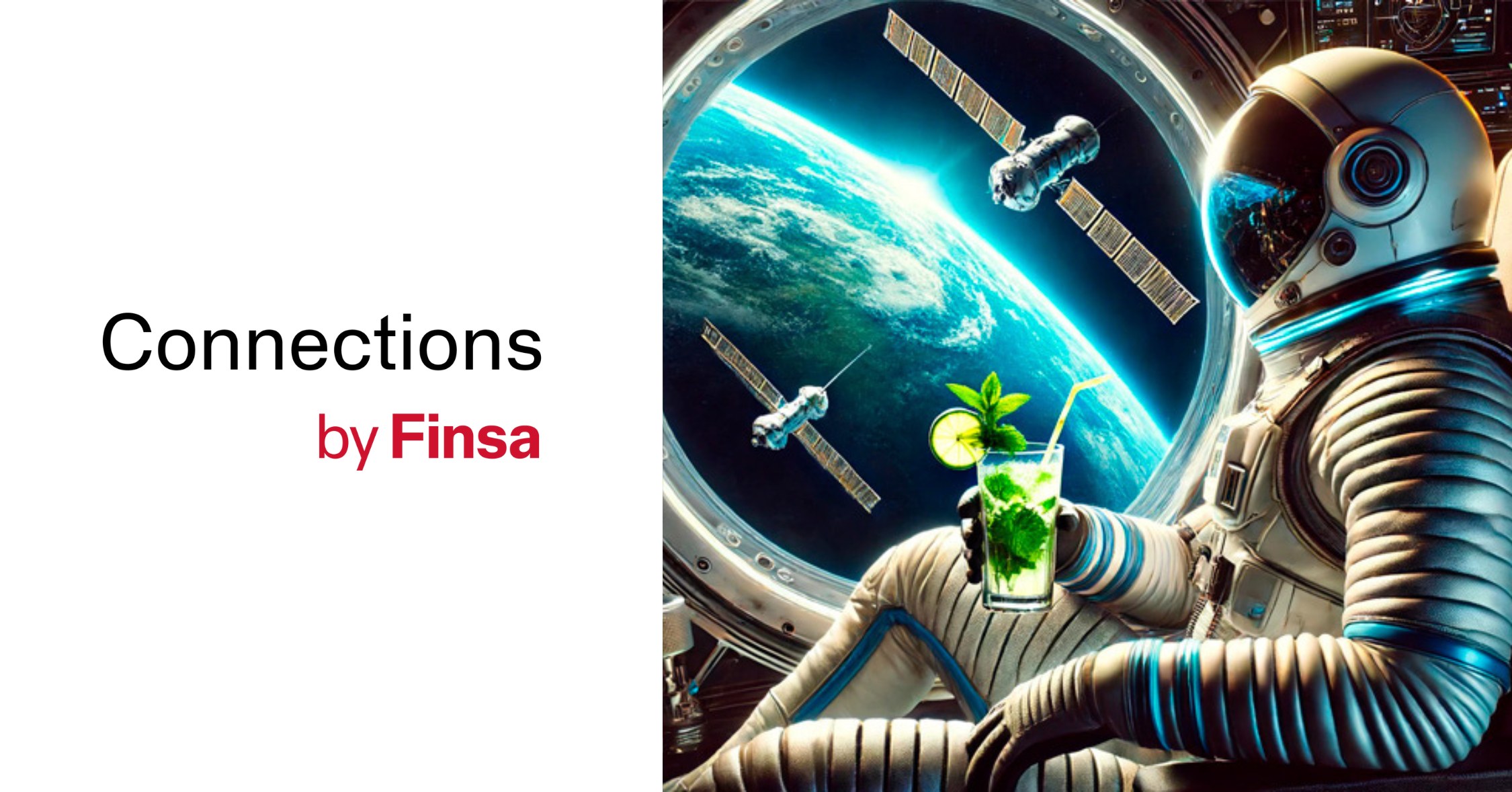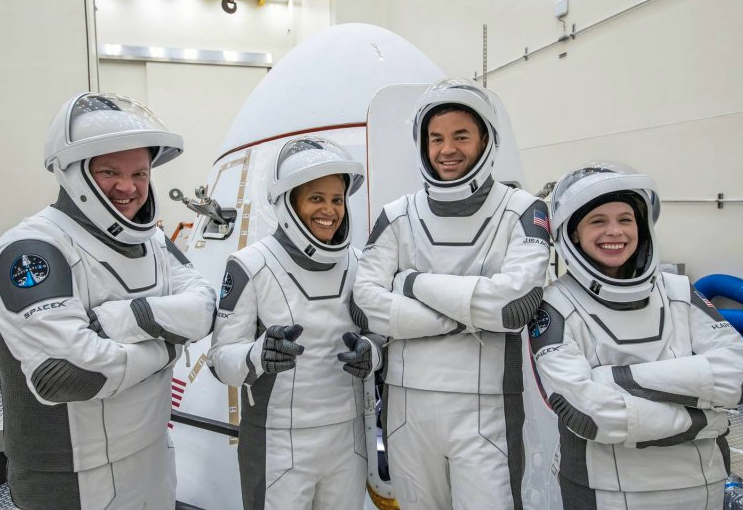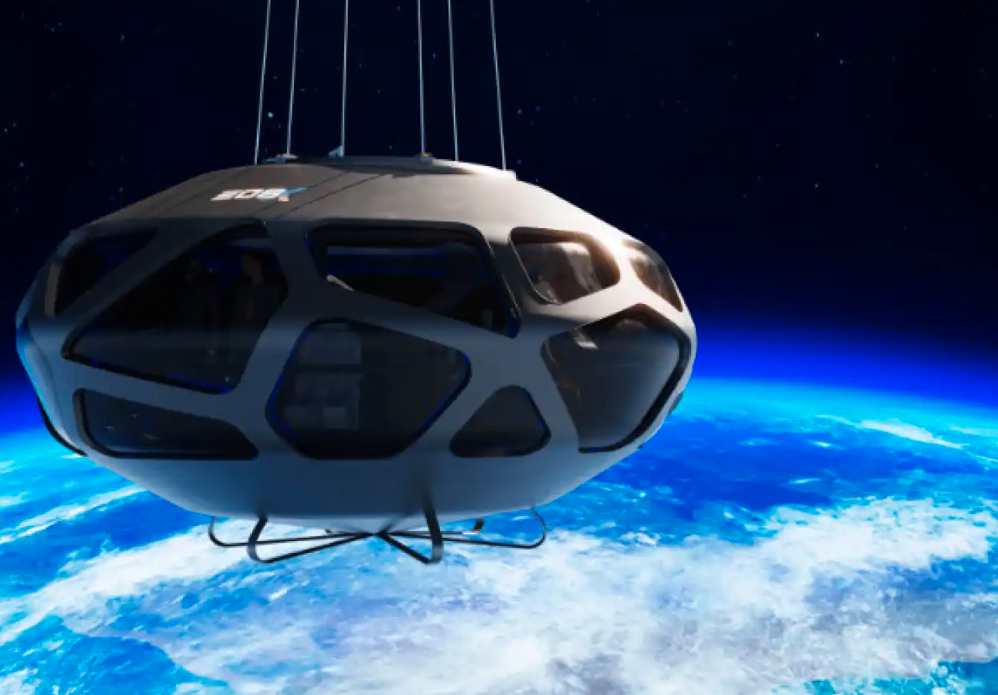Imagine spending a vacation in a space hotel and enjoying spectacular views of planet Earth. It’s not a fantasy or science fiction; it’s space tourism, and it’s a sector that is already booming, although for now, only for some wallets of cosmic dimensions.
After the space race of the 60s and 70s, exploration via probes traveling through the Solar System since the beginning of this century, and the current new sprint to return to the Moon, being able to recurrently take tourists to space is considered by many as the next step in humanity’s journey to the stars.

Space tourism: a growing industry for the next decade
Since Yuri Gagarin became the first human to orbit Earth in 1961, space exploration has been the exclusive domain of professionals and government space agencies such as NASA or its Russian equivalent, Roscosmos.
However, the dream of seeing Earth from space is not limited to cosmonauts with a scientific vocation. In the coming years, space tourism promises to open a new market niche with enormous potential. According to financial firm UBS, agencies dedicated to this segment estimate that between 2025 and 2035, the sector will move between $3 billion and $4 billion.
In fact, there are already companies with waiting lists for their trips in the coming years. Despite this, not everyone can afford such trips, as prices per passenger range between €100,000 and €200,000.
From the pioneer of space tourism to the quest for a Ryanair of off-Earth travel
However, this situation could change in the future. Companies like Spaceship Neptune aim to democratize these trips so that everyone can access them, regardless of their financial status.
Despite these initiatives, companies seeking to expand space tourism to the general public are a minority in a sector that clearly bets on luxury and personalized experiences only suitable for wealthy individuals. In fact, it could be said that without this profile, the sector would not yet exist. Its origin, in fact, is attributed to a specific millionaire: New Yorker Dennis Tito.
His case is particular. Tito, who made a fortune with an investment firm on Wall Street, is an aerospace engineer by training and had worked at NASA before founding his company. The son of Italian immigrants, he grew up during the space race between the U.S. and the USSR.
Since he saw the launch of the planet’s first artificial satellite, Sputnik, Tito decided to travel to space someday. He had the opportunity to do so in 1990 with the Soviet guest program aimed at taking civilians to the Mir Space Station, but the disintegration of the USSR frustrated the entrepreneur’s initial plan.
Finally, he succeeded on April 28, 2001, after reaching an agreement with the Russian space agency, to which he paid $20 million. Tito’s adventure was not without difficulties. NASA opposed the trip at all times, and its then-administrator, Daniel Goldin, even described it as “the whim of an eccentric“.
After taking off in a Soyuz, Tito spent just over a week on the International Space Station, where he could operate the communications system of the Russian module. Upon returning to Earth on May 6, 2001, he confessed that he had returned from “paradise.”
The evolution of space travel: what’s next?
Tito’s journey, considered the pioneer of space tourism, began to plant the seed of what was already seen as a growing industry. It was only a matter of time and technology. Tito’s decision (and the success of the trip) transformed NASA’s perception, which then began to accept new travelers on the ISS without further objections.
Figures like Mark Shuttleworth, Gregory Olsen, and Anousheh Ansari, the first female space tourist, joined the list of people who traveled to space for non-scientific reasons, paying sums ranging from $20 million to $40 million per trip.

What began as the dream of a few visionaries is now becoming a tangible reality for many millionaires. Some examples are the cases of trips made throughout the 21st century. In September 2021, SpaceX, led by Elon Musk, launched four other civilians into space, who spent three days about 540 kilometers from Earth, “farther than any other human space flight since the Hubble missions“, according to the company.
Which companies dominate the space tourism market?
Another similar case is Blue Origin, the aerospace company founded by Jeff Bezos, the founder of Amazon. In 2021, Bezos, along with his brother, made a suborbital flight aboard the New Shepard rocket (from his company). The flight lasted a total of ten minutes and ten seconds, allowing passengers to experience a few minutes of weightlessness and spectacular views of the planet.
The trio of millionaires with a space vocation is completed by Richard Branson, owner of the Virgin empire, who at one point wanted to found Virgin Galactic to also offer suborbital flights aboard his ship, the VSS Unity. The flights lasted approximately 90 minutes and reached an altitude of 100 kilometers above Earth. And yes, if you were surprised that we talk about Virgin in the past tense, it is because since December 2023, Branson announced that he would no longer invest in the company.
Another current case is the French startup Zephalto, which will offer luxury trips to space in stratospheric balloons, reaching 25 kilometers in height. The flights, which will last six hours and cost €120,000, will include gastronomic experiences and internet connection. Designed by Joseph Dirand, the first flights are planned for late 2024 or early 2025, after approval by the European Union Aviation Safety Agency (EASA).
And they are not the only companies: others like Orion Span, Boeing, Space Adventures, and Zero 2 Infinity are also competing for the market. From Spain, EOS-X Spaceship Company, based in Seville, also aims to conduct its first commercial flight in 2025 using balloons.

This is possible due to technological evolution which, along with the passage of time and the experience of other trips, has reduced travel costs, although it is still reserved for tourists with more than ample budgets. To give an idea, the current range goes from the 50 million for the Virgin trip to what an average mortgage in Spain costs to fly in an EOS-X-Space balloon, approximately €150,000.
What is a genuine space trip?
Imagine going to space and, when you return, a friend sarcastically doubts it. The so-called Kármán line, 100 kilometers above sea level, is generally accepted as the limit that must be exceeded. It is considered that from this altitude outer space begins. However, some suborbital flights do not reach this measurement, generating discussions about the authenticity of the space experience.
Some sources argue that the experience of floating in weightlessness and observing the curvature of the Earth is enough to be considered a space trip, regardless of the altitude reached. Others, on the other hand, maintain that only those who cross the Kármán line and enter Earth’s orbit can be considered true space travelers.
This definition of “space” has important implications for the sector. If only orbital trips are considered genuine space trips, the potential market can be significantly reduced.
In case you ever plan your space trip, here’s what you should know about its classification:
- Suborbital trips: Do not reach Earth’s orbit and only go to altitudes below the Kármán Line (100 km/62 miles), like the flights of Blue Origin or Virgin Galactic. They are characterized by their short duration and panoramic views.
- Orbital flights: Reach Earth’s orbit and travel around the planet, like manned space missions and low-orbit satellites. Crew members must receive specific training to spend several days or weeks in zero-gravity environments.
The future of space tourism lies in… hotels
Regardless of the definition adopted, most future travelers do not care about these “technicalities,” as evidenced by the years-long waiting lists of most companies dominating this industry. In addition, almost all bet on suborbital trips for their greater ease. Everything points to the emergence of new types of experiences, such as space hotels.
In fact, there are already several future projects, such as Voyager Station: a space hotel that could start operating in 2027 and would orbit Earth’s atmosphere. It would have a capacity for 400 guests and provide an experience with restaurants, gyms, entertainment areas, and, of course, stunning views of space and Earth.
Who knows if in the future we will choose space as another destination when planning a summer trip.




